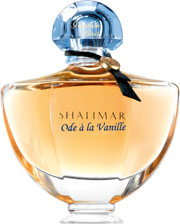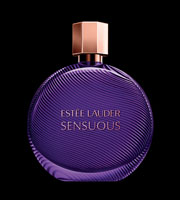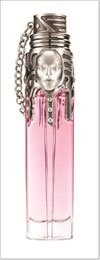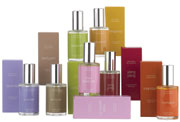While the fragrance market has come through the recession relatively unscathed, manufacturers are still playing it safe. However the buds of creativity are beginning to shoot again as Emma Reinhold reports
In an industry famed for its creativity, the olfactory vision of the fragrance market has been somewhat clouded of late. Manufacturers have tended to take a belt and braces attitude to riding out the recession, limiting launch activity and meeting the cautious consumer approach to the downturn with a play it safe attitude.
So while the last 12 months may not have produced the fragrance fireworks the industry has seen in previous years, the market has at least managed to stay on an even keel. According to Euromonitor International, the global fragrance market grew 3.8% in 2009 to $3.6bn and the outlook is showing a certain level of confidence returning to the sector.
“The recession has been hard for all brands. A lot of projects have been cancelled or postponed and brands that have launched have seen much smaller sales figures than in previous years,” Catherine Bru, director FDG, fine fragrances, IFF tells SPC.
“People are buying less but are being more considered in their purchases,” adds professeur de parfums, Roja Dove. “The market is holding its own although the mid market has had some difficulties.”
“There is also evidence that people are buying more 30ml bottles than 50ml and brands are launching more fragrances in this format as it avoids discounting. This is creating more volume but less value,” continues Jill Hill, md, Aspects Beauty.
The cautious approach does seem to have been a good business model for riding out the recession but for those brands willing to take an olfactory risk, the last two years have also offered a unique opportunity to build a fragrance classic.
“While the recession has certainly played a role in the fewer launches and a feeling of austerity, at the same time one of the biggest success stories has been Paco Rabanne’s One Million which has provocatively played on the ‘bling bling’ concept. Daring in the right way is much less risky than being shy,” adds Bru.
Playing it safe
For many big fragrance brands however, the risks associated with being daring have been just too great and those that have launched new scents have stuck to a fail-safe marketing tool – the flanker.
“Launch activity has mostly been about flankers,” explains Vivienne Rudd, senior European beauty analyst, Mintel. “Brands are looking for safe returns and this route maximises your investment with relatively low risk. Standalone activity has been restricted to the higher end of the market which has not been so affected by the recession.”
Flankers are less expensive and risky than launching a totally new fragrance, agrees Bru but the return on investment is shorter: “All brands need it. It is a way to take more space on the retailers’ shelves. Of course they know the best investment is to launch a big fragrance but you need to do both.”
Hill believes the investment in big fragrances needed to complement flanker launches will not materialise in quite the same way in future. “The days of the blockbuster scent are gone so what we are seeing instead are smaller, more frequent launches, especially in the mid market which has experienced some difficulties due to the recession.”
| Table 1: Fragrance market sizes by region, 2009 (US$m) | ||
| 2009 | ±% | |
| World | 36629.5 | 3.8 |
| Asia Pacific | 2468.9 | 3.8 |
| Australasia | 486.3 | 1.9 |
| Eastern Europe | 3536.8 | 3.3 |
| Latin America | 8531.2 | 15.8 |
| Middle East & Africa | 2652.3 | 13.8 |
| North America | 5866.4 | -5.9 |
| Western Europe | 13087.5 | -0.1 |
| Source: Euromonitor International | ||
| Table 2: Fragrance market sizes by country, 2009 (US$m) | ||
| 2009 | ±% | |
| Russia | 1790.9 | 4.9 |
| Brazil | 4812.5 | 16.7 |
| China | 511.3 | 9.2 |
| India | 117.5 | 16.5 |
| US | 5294.7 | -6.5 |
| France | 2504.7 | -1.4 |
| Germany | 2531.7 | 0.8 |
| Italy | 1406.9 | -1.2 |
| Spain | 1780.8 | -3.5 |
| UK | 1492.6 | 3.2 |
| Source: Euromonitor International | ||
The focus for many brands has been their pillar lines, putting a new twist on an old favourite. “Over the past year many brands have gone back and revisited their pillar lines creating new versions,” Fredrik Johansson, fragrance training manager, Kenneth Green Associates tells SPC. “When times are tough in the economy people buy names they know and associate with quality hence many brands refocusing on pillar lines with new interpretations,”
Taking its lead from the catwalks, the latest batch of flanker launches has been heavily influenced by the 1970s and 80s. YSL Beauté reworked its classic Opium fragrance to create Belle D’Opium, described as a ‘new generation Opium’, rather than a flanker. The ambery signature of the original has been played down by perfumers Honorine Blanc and Alberto Morillas and instead combines notes of Casablanca lily, sandalwood, gardenia, white pepper, jasmine and a narguile accord, which adds a smoky element.
Similarly, Guerlain’s in-house nose Thierry Wasser has turned his attention to the brand’s classic Shalimar scent, creating the limited edition Ode à la Vanille. The fragrance blends two vanilla accords - one from Mayotte, which adds a light transparency to the scent, and the heavier, more powerful Madagascar absolute, which creates a heady base. The bottle has been reworked by English designer Jade Jagger and features a fan stopper chiselled to resemble a precious stone.
And Lancôme debuted Trésor In Love, billed as a fresher and younger interpretation of the iconic Trésor fragrance. Notes of bergamot, peach, nectarine, pear, rose, jasmine, violet, woods and cedar help create the younger feel.
The retro trend has also influenced some of the few standalone fragrances that have launched over the past year.
Chloé’s much-anticipated Love is a deliberate nod to vintage and its powdery scent is a blend of heliotrope and iris, said to reproduce the smell of vintage rice powder. The bottle too has a strong vintage feel, with a gold cap and chain, while the advertising features model Raquel Zimmermann adorned in Chloé’s signature silk trouser suit in this season’s it colour, and 70s staple, camel.
“There has been a retro feel in the choice of notes, the packaging and the overall imagery,” says Rudd.
Similarly, the relaunched fashion brand Halston’s new fragrance duo Amber draws on its 70s roots. Halton Woman Amber opens with notes of mandarin, redcurrant and crystalline aldehydes, blending to a heart of amber, rose petal and tuberose. Finally musk, olibanum, sandalwood and white suede create a sensual, yet retro dry down.
The men’s scent, Halston Man Amber meanwhile blends geranium leaf, thyme and bergamot with a heart of amber, myrrh and labdanum. Finally oud wood, cedar and musks add depth at the base. The fragrance bottles are based on the original 1975 designs created by jeweller Elsa Peretti but have been coloured gold to create a more luxurious feel.

“We have seen a return of power fragrances in bottles with lots of gold detailing,” says Johansson. “These bottles send a message of opulence and the fragrances follow the same trend.”
And in a twist on the retro theme, new fragrance house Atelier Flou is looking to create a modern heritage with its contemporary scents. Created by perfumer Jacques Chabert and Jean-François Cabos, (ex Balenciaga) the new brand has debuted with eight fragrances, four for men and four for women and follows the ethos of quality and exclusivity.
A numbers game
Alongside the flanker, brands have continued to invest in collections of scents instead of one major product. This trend has trickled down from the luxury niche and now occupies all levels of the fragrance market.
“Collections are very strong at the moment. They offer value and are a relatively safe bet for brands,” says Hill. “They are as valid as the flanker route and now all the houses are producing collections.”
“The evolution of the fragrance collection into the mainstream is a very interesting one,” adds Dove. “The trailblazers were Chanel with its Les Exclusifs, Jean Charles Brosseau and Guerlain but now we have Dolce & Gabanna, Chloe and even Mariah Carey launching them.”
Carey’s new fragrance trio, Lollipop Bling, along with Sarah Jessica Parker’s earlier Lovely Collection fragrance trio, mark a move for the collection trend into the celebrity fragrance arena. The three scents, Ribbon, Honey and Mine again are sweet, candy-inspired fragrances inspired by the singer’s marriage proposal in which her husband Nick Cannon put a real engagement ring inside a pop ring.
Similarly, UK girl band Sugababes have launched a debut fragrance trio. The collection, comprising Tempt, Tease and Touch feature the same bottle in different shades to distinguish the fragrance and are said to work as a perfume wardrobe for different moods and occasions.

Opulence, sensuality and overt femininity have returned but with greater focus on quality ingredients
In the mainstream fragrance market there have been notable collection launches from DKNY and Chloé. DKNY extended its Be Delicious franchise one step further with the limited edition Candy Apple collection. The three scents - Sweet Caramel, Ripe Raspberry and Juicy Berry are said to contain mouth-watering notes such as marshmallow, caramel, lychee, blackberry and cola accord to create a sweet take on the original scent.
In contrast, Chloé’s Eau De Fleurs trio of fresh florals is described as clear and clean. The line-up comprises Neroli, a blend of clary sage, tonka bean, white musk and amber; Lavande, combining bergamot, violet, tea, lavender, iris, musk, vetiver and ambergris; and Capucine (nasturtium), a blend of bergamot, lemon, neroli, sage, galbanum, juniper berry, rose, jasmine, lily of the valley, ambroxan and musk.
And at the luxury end of the market, the collection theme is still holding its own with Tom Ford adding Azure Lime, a warm blend of jasmine, neroli, violet leaf, orange flower, Oregon mint, black basil, patchouli, tonka bean, sea moss and oakwood extract to his Private Blend collection.
Retail rallies
The department store has been a casualty of the recession as footfall on the high street has dropped in favour of other retail outlets which have found favour with consumers. Naturally fragrance sales have suffered the knock-on effect but retailers are finding new ways to woo back the consumer.
“Beauty specialists such as department stores have taken a hit; growth has been through supermarkets and the internet has opened up the fragrance market to price comparisons,” explains Carrie Lennard, industry analyst, beauty and personal care, Euromonitor. “Supermarkets are stepping up their beauty sections to pick up the lower footfall and the internet is growing so department stores need to raise their game.”
With this in mind retailers are looking beyond the traditional department store concept to encourage consumer spending.
“The recession hasn’t harmed beauty as a whole but yes the whole industry has felt it,” says Tracy Van Heudsen, senior beauty buyer, House of Fraser. The retailer is meeting online competition head on with a new virtual fragrance tool to help consumers choose a scent. The House of Fragrance is based on Michael Edwards’ fragrance classifications and provides education on different scents and scent families.
“Educating the consumer is paramount and we are in a unique position to provide this,” adds Van Heudsen.
The store has also focused on securing exclusive fragrances, the latest of which is British make-up artist Mary Greenwell’s debut scent, Plum. The new scent is a classic chypre with a modern twist and opens with top notes of plum, blackcurrant, peach, bergamot and lemon. Gardenia, tuberose, orange flower, rose and jasmine create the floral heart, while precious woods, sandalwood, oakmoss, patchouli, amber and white musk create the warm dry down. Described as quintessentially British, the fragrance is available as an edp, solid parfum, purse spray and scented candle.
“Retailers are driving differentiation. Everyone had the same portfolio for a while but now buyers are looking for something different,” says Hill. “Stores have had to work much harder and everyone is trying to make a point of difference in their own way. Some retailers are offering value orientated promotions while other stores are concentrating more on the niche.”
Luxury department store Harrods is concentrating on the role perfume plays in our daily lives with the creation of The Perfume Diaries, a new exhibition exploring the past, present and future of the fragrance industry. Curated by Roja Dove, the installation features fragrances chosen because of their influence on the industry as well as the fashion that influenced the fragrances including a pendant from Van Cleef & Arpels, said to be the inspiration behind First, and a couture Dior dress linked to the original Miss Dior scent.
| Table 3: Premium global fragrance market vs mass global fragrance market | |
| % breakdown | |
| Premium | 55.4 |
| Mass | 44.6 |
| Source: Euromonitor International | |
| Table 4: Leading fragrance brands, 2009 | |
| Brand | Company |
| Avon | Avon Products Inc |
| Natura | Natura Cosméticos SA |
| Chanel | Chanel SA |
| Calvin Klein | Coty Inc |
| Christian Dior | LVMH |
| Giorgio Armani | L’Oréal Groupe |
| Estée Lauder | Estée Lauder Cos |
| Hugo Boss | Procter & Gamble Cos |
| O Boticário | Botica Comercial Farmacêutica Ltda |
| Yves Saint Laurent | L’Oréal Groupe |
| Source: Euromonitor International | |
Return to opulence
A key theme in recent fragrance development has been a move towards more sensual scent compositions with richer, more qualitative ingredients taking centre stage.
“There has been a move away from the fruity florals towards richer compositions - there has been a lot of jasmine, tuberose, patchouli and osmanthus in recent fragrance launches and people are talking a lot about the quality and authenticity of sourcing,” says Rudd.
“After years of transparency, cleanliness and fruitiness, consumers are looking for more texture, sexiness and glamour,” adds Bru.
This trend has manifested itself in the form of very feminine fragrances. Calvin Klein’s new flagship fragrance Beauty for example is said to encapsulate the spirit for a woman who is beautiful from the inside out, with ‘an aura that radiates femininity’, according to the brand. The juice combines ambrette seeds, jasmine and cedarwood to create a ‘neo-lily’ accord, inspired by the calla lily which the designer has used in his fashion line.
And Gucci’s latest offering Guilty is being promoted as a fragrance for a 21st century beauty, blending notes of mandarin, pink peppercorn, lavender, amber and patchouli. The gold bottle features the fashion house’s iconic interlocking Gs, allowing the juice to be seen from inside.
Bottle design has also been a key theme for Paco Rabanne. Following the success of One Million, the designer has launched a female counterpart, Lady Million which is housed in a bottle designed to resemble a diamond. Designed by Noé Duchafour-Lawrance, the bottle has no specific base and can be placed on any facet just like a real diamond. IFF’s Anne Flipo, Beatrice Piquet and Dominique Ropion created the sensual woody floral which blends bitter orange, raspberry, neroli, Arabian jasmine, gardenia, patchouli, honey and amber.

Womanity by Thierry Mugler
The trend towards richer compositions has also been picked up by designer Orla Kiely, whose debut fragrance blends heady rose absolute and velvety osmanthus with musks, tonka bean and woods, while Van Cleef & Arpels’ Oriens, Fendi’s newly launched Fan di Fendi and Thierry Mugler’s Womanity all celebrate femininity with luxurious fragrance notes and elaborately designed bottles.
Brands not normally associated with sensual scents have also added richer compositions to their product line-up. Osmanthus has also played a key role in Issey Miyake’s limited edition L’Eau d’Issey Noir Absolu. The floral scent is warmed with amber as well as cinnamon and nutmeg notes to add a more sensual element to the L’Eau d’Issey family.
Nina Ricci meanwhile has created an intense interpretation of its popular Nina fragrance. L’Elixir, is still a sweet floral but this version includes red toffee apple, jasmine, red berries, Calabria lemon and Caipirinha lime, along with cedarwood, cotton musk and amber.
Esteé Lauder has added a deeper, darker facet to its Sensuous fragrance in the form of Sensuous Noir, which has a more animalistic, musky element than the original, according to the brand. And Narciso Rodriguez’s new essence eau de parfum intense offers a more concentrated musk note balanced with powdery iris notes that are said to offer a radiant sensuality.
Going green
In contrast to the opulent sensuality of many of the latest launches, the trend for cleaner, greener scents is also gathering pace. Bru sees these scents as an antidote to ‘bling’ culture.
“Pure white scents have been a popular trend,” adds Johansson. “They represent something uncomplicated and ‘clean’. They are are easy on the nose and conjure up emotions of feeling clean and refreshed.”
Serge Lutens’ L’Eau Serge Lutens is one such example. Described as an ‘anti fragrance’ the scent is Lutens’ answer to ‘society’s compulsion to fill the air with artificial scents’ and is likened to a breath of fresh air.
“Simplicity, purity and less is more is popular and is also linked to the bio, green trend,” continues Bru.
DKNY has taken the trend from the niche into the mainstream with the launch of Pure, a new scent inspired by the simplicity of a drop of water and created in conjunction with CARE, a non-profit organisation that ensures vanilla bean farmers who supply the vanilla for the fragrance receive a fair wage and a good standard of living. And in another eco twist, the fragrance bottle is claimed to be 100% recyclable, while the outer carton is biodegradable.
Kenzo has also focused on green packaging,with a refill for Flowerbykenzo.
“The consumer goods industry as a whole is tapping into the new zeitgeist of caring for the environment and products that cause minimal damage, either to the environment or the people that source their ingredients. Fragrance is no exception,” says Lennard.

The trend for organic scents is growing alongside efforts to provide greener packaging such as an organic fragrance line from Balm Balm
Organic fragrances are also growing in popularity, though the market still remains relatively niche. The Organic Pharmacy launched four fragrances under its Organic Glam umbrella claimed to be free of artificial fragrances and colours, and contain no phthalates or animal ingredients. The scents – Citron, Oriental Blossom, Jasmine and Oud – are the result of three years of development, according to the brand.
And Balm Balm has launched a collection of seven single note organic scents, claimed to be 100% organic. The range includes bergamot, mandarin, ylang ylang, rose geranium, lavender, spearmint and petitgrain and can be worn alone or layered together to create a bespoke scent. In addition, the outer packaging is carbon neutral from FSC sources and decorated with organic ink.
Celebrity still sells
Despite predictions to the contrary, the celebrity fragrance market continues to thrive in many markets and the number of launches is showing no sign of letting up.
“We’ve seen consistent sales in celebrity fragrance throughout the recession. Celebrity fragrance is like any other – strong sales come down to good ingredients, packaging and marketing support,” says Keran Fordham, buying director, The Perfume Shop, where the celebrity market makes up around 5% of the retailer’s business.
“Celebrity still has a role to play but it is true that the first fragrance is often a huge success and the following ones are much smaller,” says Bru.
Recent notable launches include Jennifer Aniston’s eponymous debut fragrance, Reveal from Halle Berry and Mary J Blige’s My Life which have all promoted the quality of the ingredients and packaging used, with the latter achieving record breaking sales of over 70,000 bottles in the first few days of its US launch on shopping channel HSN.
The most high profile signing in recent months has been Coty’s agreement with Lady Gaga. The first fragrance is due to launch in 2012 which is a long turnaround. “Waiting that long to launch a celebrity fragrance can be a gamble as you cannot guarantee the popularity of the celebrity will still be strong,” says Rudd.
A case in point is Katie Price’s love-hate relationship with the media and wider public. However this has not stopped her from launching yet another fragrance. Precious Love features notes of kaffir lime, watery musk, jasmine, rose and amber.
And now Price’s ex-husband Peter Andre is launching a second women’s scent, Mysterious Girl, in time for Christmas. His first fragrance for women, Unconditional, was reportedly among the best selling perfumes of 2009.
The popularity of the celebrity scent has also lured niche brands onto the market. Quirky brand Etat Libre d’Orange has partnered with Live Nation Merchandising to launch a new scent entitled Sex Pistols. A second Sex Pistols-themed scent is scheduled for release in 2011.
Alongside the Etat/Sex Pistols collaboration, there have been several other interesting perfume partnerships over the last year. TV broadcaster BSkyB launched a limited edition fragrance to promote its HD service. Eau de Stade was fronted by former pop star Rachel Stevens and was available in a special pop-up store in central London. Similarly, fashion bible Elle celebrated its 25th anniversary with the creation of Elle 25, an ultra exclusive fragrance created by perfumer Francis Kurkdjian. And UK tabloid The Sun partnered with Roja Dove to create Buzz, a PR stunt to launch the paper’s new entertainment magazine. The marketing campaign included branding a bus stop opposite Harrods and pumping the fragrance into the area.
The fragrance market has survived the recession through a combination of safe marketing and attention to detail. It is this attention to quality and sourcing which will be important to move the sector forward. Dove concludes: “Legitimacy, creativity and quality are key – it’s what the industry founded itself on. Fragrance will return to its roots but in a modern way, looking forward not back.”

